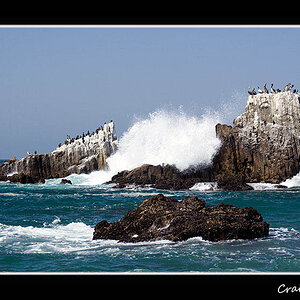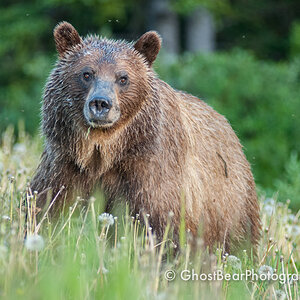I am having a little trouble with my metering for my Canon XS. 1) I do not know when to use which mode, Center-Weighted Average, Partial Metering, or Evaluative Metering. Could someone explain to me the benefits of each, or which is the best to use? Also if someone could clarify for me when I go to take a meter read in manual and half press the shoot button the red dots register what the camera is focusing on but is that also what it is using for the meter read? Thank you for your time and help.
Navigation
Install the app
How to install the app on iOS
Follow along with the video below to see how to install our site as a web app on your home screen.

Note: This feature currently requires accessing the site using the built-in Safari browser.
More options
You are using an out of date browser. It may not display this or other websites correctly.
You should upgrade or use an alternative browser.
You should upgrade or use an alternative browser.
Canon XS Metering Modes??
- Thread starter wmc1117
- Start date
Josh66
Been spending a lot of time on here!
- Joined
- Oct 31, 2007
- Messages
- 14,593
- Reaction score
- 1,239
- Location
- Cedar Hill, Texas
- Can others edit my Photos
- Photos NOT OK to edit
Center-Weighted Average
Does what it says. Averages the entire scene, with added emphasis on the center.
Partial Metering
Like Spot metering, but the spot is bigger. Only meters a small area (usually in the center, sometimes attached to the active focus point)
Evaluative Metering
Averages out the entire scene. Tries to get a good exposure for everything.
Evaluative & Center Weighted meter the whole scene.
Does what it says. Averages the entire scene, with added emphasis on the center.
Partial Metering
Like Spot metering, but the spot is bigger. Only meters a small area (usually in the center, sometimes attached to the active focus point)
Evaluative Metering
Averages out the entire scene. Tries to get a good exposure for everything.
No. In most cases this is not what is happening. In Partial/Spot metering, it may be metering from the active focus point - but it's usually just the center.Also if someone could clarify for me when I go to take a meter read in manual and half press the shoot button the red dots register what the camera is focusing on but is that also what it is using for the meter read?
Evaluative & Center Weighted meter the whole scene.
- Joined
- Dec 16, 2003
- Messages
- 33,896
- Reaction score
- 1,853
- Location
- Edmonton
- Website
- www.mikehodson.ca
- Can others edit my Photos
- Photos NOT OK to edit
There really isn't a right or wrong when it come to metering modes...but it does help if you understand which mode you are in, and what that mode is doing. It's fairly simple, partial metering uses only the center area. Centre-weighted uses the whole scene but gives more precedence to the centre and Evaluative uses the whole area (or thereabouts).
If you are shooting a landscape with different tones throughout, you might choose evaluative. If you are shooting a portrait of a single person with a lot of background around them, you might use partial or centre weighted so that you are metering for the person and not the background.
The metering mode does not change (or shift position) based on the active focus point (not to my knowledge anyway). The active (red) focus point light is only to tell you which point is active.
If you are shooting a landscape with different tones throughout, you might choose evaluative. If you are shooting a portrait of a single person with a lot of background around them, you might use partial or centre weighted so that you are metering for the person and not the background.
The metering mode does not change (or shift position) based on the active focus point (not to my knowledge anyway). The active (red) focus point light is only to tell you which point is active.
Josh66
Been spending a lot of time on here!
- Joined
- Oct 31, 2007
- Messages
- 14,593
- Reaction score
- 1,239
- Location
- Cedar Hill, Texas
- Can others edit my Photos
- Photos NOT OK to edit
The metering mode does not change (or shift position) based on the active focus point (not to my knowledge anyway). The active (red) focus point light is only to tell you which point is active.
Some cameras attach spot metering to the active focus point, not sure if the XS does this though (probably not).
- Joined
- Dec 16, 2003
- Messages
- 33,896
- Reaction score
- 1,853
- Location
- Edmonton
- Website
- www.mikehodson.ca
- Can others edit my Photos
- Photos NOT OK to edit
I thought that might be the case...especially with the higher end 'Pro' bodies...but I don't know about something like the XS.
- Joined
- Dec 16, 2003
- Messages
- 33,896
- Reaction score
- 1,853
- Location
- Edmonton
- Website
- www.mikehodson.ca
- Can others edit my Photos
- Photos NOT OK to edit
Josh66
Been spending a lot of time on here!
- Joined
- Oct 31, 2007
- Messages
- 14,593
- Reaction score
- 1,239
- Location
- Cedar Hill, Texas
- Can others edit my Photos
- Photos NOT OK to edit
Well, it depends on what mode you're in - but I'll assume you're in Partial, since that's what I use the most and am most familiar with...
When you have different levels of light in the scene, you have to decide what is the most important thing to be properly exposed. That's what you meter off of.
In evaluative or center-weighted average, it doesn't really mattter - it's looking at everything.
When Evaluative or Center-Weighted are giving you bad results - try Partial.
Partial is a lot more specific. It only meters what you point it at. All you have to know is what to point it at.
When you have different levels of light in the scene, you have to decide what is the most important thing to be properly exposed. That's what you meter off of.
In evaluative or center-weighted average, it doesn't really mattter - it's looking at everything.
When Evaluative or Center-Weighted are giving you bad results - try Partial.
Partial is a lot more specific. It only meters what you point it at. All you have to know is what to point it at.
Ok thanks I think Partial is what I was looking to use...I have been using Center-Weighted...cause most of my shots have been having a lot of green in them so I was trying to expose with the -2/3 and I think it was picking up more than just the green.
I was confused for this shot where to take the meter read. I knew I wanted a flowing waterfall and not the streaking one like it was. Would you have recommended setting the shutterspeed to something like 1/4 and then taking a meter read off of the green above the waterfall?


Josh66
Been spending a lot of time on here!
- Joined
- Oct 31, 2007
- Messages
- 14,593
- Reaction score
- 1,239
- Location
- Cedar Hill, Texas
- Can others edit my Photos
- Photos NOT OK to edit
I was confused for this shot where to take the meter read. I knew I wanted a flowing waterfall and not the streaking one like it was. Would you have recommended setting the shutterspeed to something like 1/4 and then taking a meter read off of the green above the waterfall?

In this situation - with moving water, first you have to decide how much movement you want to show. That's your shutter speed.
Next, meter it. I would probably meter off of the trees, or maybe the rocks.
Adjust your aperture (and ISO, if you can't get what you want) untill the selected shutter speed is giving you a "good" exposure (zeroed out meter) on whatever you're metering off of.
Metering off of the (white, and pretty bright) water will tend to make everything else underexposed.
You camera is going to try to make whatever you meter off of a neutral grey (imagine that it is B&W)
- Joined
- Dec 16, 2003
- Messages
- 33,896
- Reaction score
- 1,853
- Location
- Edmonton
- Website
- www.mikehodson.ca
- Can others edit my Photos
- Photos NOT OK to edit
A more in depth way to meter a landscape scene, is to use your smallest metering area and meter different parts of the image. This is one reason why higher end cameras have a spot metering mode, rather than just partial.
What you would do, is meter specific areas...the rocks, the greenery etc and find out what the difference between them is. It might be 4 stops, for example. They you take into mind that a digital camera has a native latitude (the dynamic range) of about 5 stops (it may be a little more these days).
So then you figure out what exposure level you should shoot at, so that it covers (as best as possible) the range of your scene. This is sort of the idea of the evaluative metering mode, but as the camera is just a computer, it can be easily fooled.
Now, this shot is a little harder because running/bubbling water will 'always' turn white which makes it very hard to expose with a darker scene.
There are other things you can do to 'even out the light' in a scene. One would be to use a split or graduated filter to block off the brighter areas. Another would be to add light (flash etc) to darker areas. Yet another would be to take multiple shots and use software to combine them...or just edit areas of the image selectively.
What you would do, is meter specific areas...the rocks, the greenery etc and find out what the difference between them is. It might be 4 stops, for example. They you take into mind that a digital camera has a native latitude (the dynamic range) of about 5 stops (it may be a little more these days).
So then you figure out what exposure level you should shoot at, so that it covers (as best as possible) the range of your scene. This is sort of the idea of the evaluative metering mode, but as the camera is just a computer, it can be easily fooled.
Now, this shot is a little harder because running/bubbling water will 'always' turn white which makes it very hard to expose with a darker scene.
There are other things you can do to 'even out the light' in a scene. One would be to use a split or graduated filter to block off the brighter areas. Another would be to add light (flash etc) to darker areas. Yet another would be to take multiple shots and use software to combine them...or just edit areas of the image selectively.
Josh66
Been spending a lot of time on here!
- Joined
- Oct 31, 2007
- Messages
- 14,593
- Reaction score
- 1,239
- Location
- Cedar Hill, Texas
- Can others edit my Photos
- Photos NOT OK to edit
A more in depth way to meter a landscape scene, is to use your smallest metering area and meter different parts of the image. This is one reason why higher end cameras have a spot metering mode, rather than just partial.
Yes, this would be the best thing to do.
Read up on the zone system. This will help you decide where different elements in the scene need to be on the zone scale (and how to put them there).
Your meter will try to place everything in zone V.
- Joined
- Dec 16, 2003
- Messages
- 33,896
- Reaction score
- 1,853
- Location
- Edmonton
- Website
- www.mikehodson.ca
- Can others edit my Photos
- Photos NOT OK to edit
We forgot to mention the option of a hand held meter. Many hand held light meters can be use as 'reflective' light meters...which is essentially the same as the camera's meter...but you can also use them as incident light meters...meaning that you put the meter in the light that is hitting your subject and measure the light (rather than the light coming off of the subject). This can help you avoid the problems of trying to figure out the tones and reflectivity of different parts of your subject/scene. Of course, if the scene has parts that are too bight and too dark...no single setting will get it all in one shot, no matter how you meter.
Similar threads
- Replies
- 6
- Views
- 647
- Replies
- 0
- Views
- 136

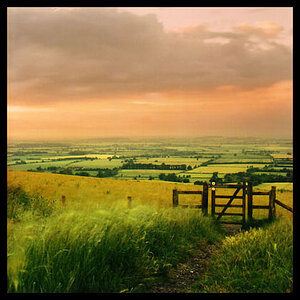
![[No title]](/data/xfmg/thumbnail/38/38736-5bc266b035e23faf5ad942bdd97466a8.jpg?1619738703)
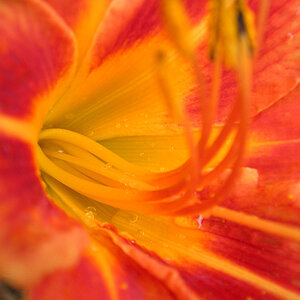

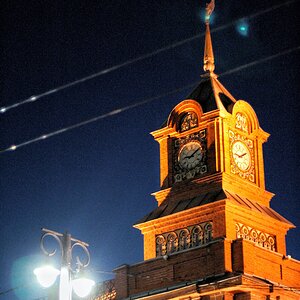
![[No title]](/data/xfmg/thumbnail/34/34142-948c6bafdf60862125009004d5a06e46.jpg?1619736315)
![[No title]](/data/xfmg/thumbnail/31/31748-63241c520f250328a5ec32959b8f53d0.jpg?1619734989)
